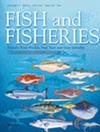帮助建立澳大利亚的库存评估能力:一个案例研究
IF 6.1
1区 农林科学
Q1 FISHERIES
引用次数: 0
摘要
在许多国家,渔业种群评估能力面临资源限制,包括人员有限、工作量大和资金有限。种群评估科学家通常在较短的时间内开展工作,其结果可能影响生计并受到公众监督。科学家们每年都要进行多次评估,这使得时间管理成为一项挑战。因此,在现有业务需求范围内寻找投资专业发展的机会仍然很困难。我们开发了一系列方法来投资澳大利亚的就业种群评估能力,并将这些方法作为其他类似海洋科学领域和国家的案例研究。这些方法为发展“实践社区”提供了重要的见解。我们使用网络分析来评估基于已发表的澳大利亚股票评估和相关论文的合作。然后,我们使用调查和访谈来了解限制存量评估科学家投资于自身发展的因素。然后提供了工具和机会:(a)一个网站,提供免费提供的鱼类评估资料包和澳大利亚鱼类评估报告的中央储存库;(b)向各组织的参与者开放的关于使用评估包的培训课程;(c)在“无后果”环境中学习的模拟游戏。本文强调了已经学到的东西,并将这些发现推广到澳大利亚股票评估社区的福祉之外。本文章由计算机程序翻译,如有差异,请以英文原文为准。
Helping to Build Stock Assessment Capacity in Australia: A Case Study
Fisheries stock assessment capacity faces resource constraints in many countries, including limited personnel, high workloads, and restricted funding. Stock assessment scientists often operate under short timelines, with outcomes that can influence livelihoods and receive public scrutiny. Scientists frequently manage multiple assessments each year, making time management a challenge. Consequently, finding opportunities to invest in professional development remains difficult within existing operational demands. We developed a series of approaches to invest in Australia's employed stock assessment capacity, and present these as a case study for other similar marine science fields and countries. The approaches led to critical insights to a way forward to develop a ‘Community of Practice’. We used network analyses to evaluate collaboration based on published Australian stock assessments and related papers. We then used surveys and interviews to understand the factors that have constrained stock assessment scientists in investing in their own development. Tools and opportunities were then made available: (a) a web site providing a central repository on freely available stock assessment packages and Australian stock assessment reports; (b) training courses on the use of assessment packages that were open to participants across organisations; and (c) a simulation game to learn in a ‘consequence free’ environment. This paper highlights what has been learnt and generalises these findings beyond the Australian stock assessment community's well‐being.
求助全文
通过发布文献求助,成功后即可免费获取论文全文。
去求助
来源期刊

Fish and Fisheries
农林科学-渔业
CiteScore
12.80
自引率
6.00%
发文量
83
期刊介绍:
Fish and Fisheries adopts a broad, interdisciplinary approach to the subject of fish biology and fisheries. It draws contributions in the form of major synoptic papers and syntheses or meta-analyses that lay out new approaches, re-examine existing findings, methods or theory, and discuss papers and commentaries from diverse areas. Focal areas include fish palaeontology, molecular biology and ecology, genetics, biochemistry, physiology, ecology, behaviour, evolutionary studies, conservation, assessment, population dynamics, mathematical modelling, ecosystem analysis and the social, economic and policy aspects of fisheries where they are grounded in a scientific approach. A paper in Fish and Fisheries must draw upon all key elements of the existing literature on a topic, normally have a broad geographic and/or taxonomic scope, and provide general points which make it compelling to a wide range of readers whatever their geographical location. So, in short, we aim to publish articles that make syntheses of old or synoptic, long-term or spatially widespread data, introduce or consolidate fresh concepts or theory, or, in the Ghoti section, briefly justify preliminary, new synoptic ideas. Please note that authors of submissions not meeting this mandate will be directed to the appropriate primary literature.
 求助内容:
求助内容: 应助结果提醒方式:
应助结果提醒方式:


